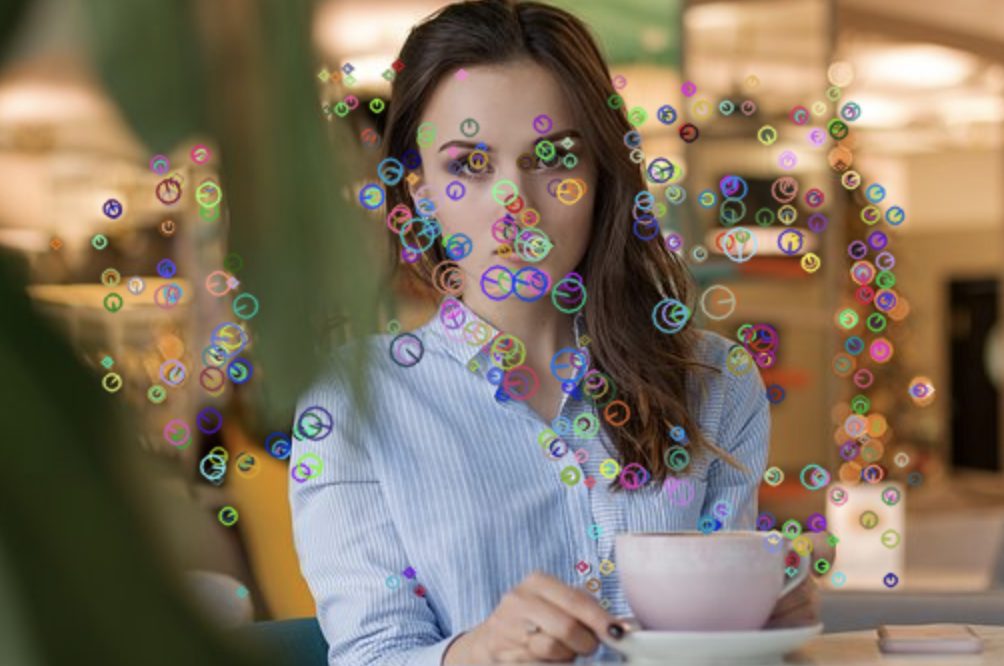Hello, this is Yuki (@engineerblog_Yu), a student engineer.

The image above shows 100 feature points plotted by OpenCV.
This time, we verified whether the feature points can be matched even if the image is rotated or scaled down.
The following is the coding part.
Coding
This environment is Google Colaboratory.
import cv2
from google.colab.patches import cv2_imshow
img1 = cv2.imread("woman.jpeg")
img2 = cv2.imread("woman.jpeg")
img2 = cv2.resize(img2,(300,280))
height = img2.shape[0]
width = img2.shape[1]
center = (int(width/2), int(height/2))
angle = 45.0
scale = 1.0
trans = cv2.getRotationMatrix2D(center, angle , scale)
img2 = cv2.warpAffine(img2, trans, (width,height))
akaze = cv2.AKAZE_create()
kp1,des1 = akaze.detectAndCompute(img1,None)
kp2,des2 = akaze.detectAndCompute(img2,None)
bf = cv2.BFMatcher(cv2.NORM_HAMMING, crossCheck=True)
matches = bf.match(des1,des2)
matches = sorted(matches, key = lambda x:x.distance)
img3 = cv2.drawMatches(img1, kp1, img2, kp2, matches[:30], None, flags = cv2.DrawMatchesFlags_NOT_DRAW_SINGLE_POINTS)
cv2_imshow(img3)
In this case, we sorted the characteristic points in order of importance and extracted 30 of them.
You can see that the feature points roughly match those of the original image rotated and scaled down.
Display of coordinates of similar feature points
img1_pt = [list(map(int, kp1[m.queryIdx].pt)) for m in matches]
img2_pt = [list(map(int, kp2[m.trainIdx].pt)) for m in matches]
print(img1_pt)
print(img2_pt)output:

Thank you for reading to the end!





コメント